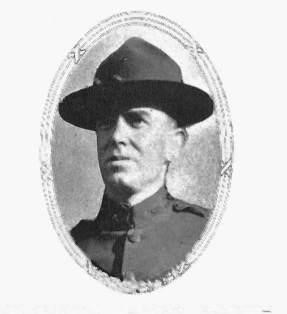Booth, Kenneth James

Born:
San Leandro, California, September 4, 1884
Date of Death:
April 28, 1919
Hero Bio:
Kenneth James Booth was born in San Leandro, California, on the 4th of September 1884. He received his early schooling in California, after which he moved to Nevada with the family. In 1902 he was a resident of Tonopah, Nye County, where he worked under his father during his vacations from the State University. He spent two years in Reno taking the mining course in the University. In 1905 he enlisted in the regular army and gave fifteen months to the service of the Flag. Fie was a corporal in Company L, 22d Infantry, which was stationed at San Francisco at the
time of the earthquake and fire, and at that time he was in charge of one of the refugee camps.
After receiving his honorable discharge from the army, he returned to Nevada to accept the position of Assistant Editor of the Tonopah Daily Bonanza of which his father was, and still is, the Editor. There he gained the reputation as a writer which was to make him known throughout Nevada. On December 19th, 1911, he was united in marriage with Miss Kathryn Boyd in Tonopah. Since then, their union has been blessed by two sturdy boys, Kenneth Boyd Booth and James Beverly Booth. In the same year (191 1) Kenneth Booth sat in the Assembly of the Nevada Legislature. He was chosen speaker pro tempore at that session. In the following year he moved to Reno
to join the editorial staff of the Nevada State Journal. He remained with that paper as City Editor until the month of May 1917, when he entered the first Officers’ Training Camp at San Francisco.
At the close of the training course the only Captain’s commission given to a Nevada man at that time was conferred upon Kenneth Booth. He was assigned to Camp Lewis, Washington, a National Army cantonment where new levies were being received and trained. Eventually he was placed in command of Company D, 362d Infantry, 91st Division.
When the 91st first went into action (September 26, 1918), Captain Booth was serving personally with his company. The 91st entered the great battle known as the Meuse-Argonne Offensive at a point just south of the Bois de Cheppy. In spite of a most stubborn resistance the division fought its way to a point north of Gesnes, suffering heavy casualties during the advance. Among those struck was Captain Booth who received a wound in the shoulder.
Before the fighting captain was recovered from his wound and able to join his regiment again, the 91st had been sent to Flanders to re-enforce the allied lines there. Captain Booth returned to his unit in time to take part in the campaign in Belgium (October 30-November 3; November 10-11) and again conducted himself with signal courage.
After the Armistice had been signed, he was transferred to Company L, 16th Infantry, 1st Division and sent into Germany with the Army of Occupation.
While stationed at Dernbach, Germany, a most lamentable accident occurred one day when Captain Booth was riding in a motorcycle sidecar. The machine skidded, throwing the captain, and his companion against a tree. This misfortune, which occurred on the 28th of April 1919, invalided Captain Booth to a hospital with two badly fractured legs, where he remained until the time of his death. In the meantime, he wrote cheerful letters home expressing the belief that it would not be long before he could return to the States. The news of his death on the 11th of June 1919, at Coblentz, came as a great shock to all who knew him. Those who survive him are his father, W. W. Booth, two brothers, Chauncey L. and Walter W. Booth, Jr., all of Tonopah, Nevada, and his own immediate family, Mrs. Kathyrn B. Booth and their two sons, Kenneth Boyd and James Beverly Booth, of 420 Santa Clara Ave., Alameda, California.
Rank in Death:
Corporal (1st enlistment) Captain (Second enlistment)
Regiment, Brigade, Division in Death
Company L, 22d Infantry(1st enlistment) Company D, 362d Infantry, 91st Division (2nd enlistment)